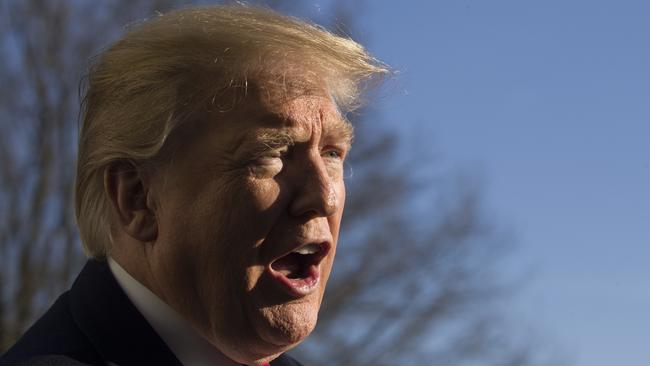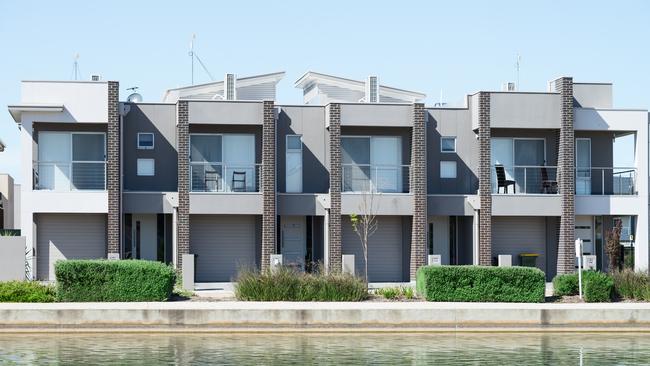David and Libby Koch’s new year predictions for Aussie investors
FORECASTING is always fraught with danger. Shares, property and Australia’s economy may also face some dangerous headwinds in 2019.
AS we start a new year it’s time to polish the crystal ball with our 13th annual predictions for the economy, share and property for the 12 months ahead.
We also come clean on how our predictions from this time last year actually panned out in reality. Harsh but fair, we reckon. If you’re going to put yourself on the line there has to be some accountability.
An old economist mate of ours always says; “if you’re going to forecast, do it often so you can keep changing your mind… or forecast so far into the future, that when you get there people have forgotten what you’ve said”.
The sections in italics are what we predicted this time last year for 2018. It’s fair to say the only people who seemed to have made money last year was the Government with its river of tax gold and tight spending.
ECONOMY
• Economic growth around 3 per cent
• Unemployment below 5.5 per cent
• Aussie dollar to stay above US70 cents
• If there was an interest rate hike it would be at very end of the year
Our predictions for the Australian economy were pretty right as we entered our record-breaking 28th consecutive year of positive economic growth. Our economic performance was highlighted by the prestigious London-based The Economist financial magazine with a 15-page cover story titled “Aussie Rules… what the rest of the world can learn from Australia”.
Overall, 2018 was another strong year, which has resulted in the Federal Budget coming into surplus much earlier than expected. But 2019 looks a lot more uncertain.

The red-hot US economy is under pressure from four interest rate hikes, a potential trade war with China and erratic policy decisions from the Trump administration. Some market analysts are factoring in the possibility of a US recession in the next 18 months.
The ripple effect of a slowing US economy and trade war will be significant to global growth, and Australia will not be immune.
But we’re in good shape to fight any global headwinds and also the slowdown in our property market. The Federal Budget is in good shape, employment is strong and trade balance solid.
We’d expect no change in official interest rates for 2019. If there is a change, it is more likely to be a cut in rates if the economy gets bad from those global influences.
Economic growth of around 3 per cent (slightly less than other market predictions) still looks achievable which would be helped by an Australian dollar below US70 cents.
SHARES
• It’s all about Trump
• US tax cuts should underpin corporate profits, happy consumers and rising share prices
• Another solid year for Australian sharemarkets
What a horrible year for sharemarkets around the world… the worst since the Global Financial Crisis. And, yes indeed, a lot of the reason was about Trump.
Volatility unnerved many of us. We were alarmed by big sharemarket falls in February, were relieved when markets bounced back strongly across the middle of the year, and then shattered by the falls of the last three months.

Across the major indices for the year, America’s broader based S&P 500 was 6.2 per cent lower, London’s FT-100 was down 12.5 per cent, and Germany’s DAX closed 18.3 per cent lower.
Locally, the ASX-200 was off 6.9 per cent in Australian dollar terms, but in US dollar terms (that’s how international investors measure us), the index lost a hefty 15.93 per cent for the year.
While healthcare stocks had a good year, our major banks took a battering from increased regulation and the consequences of the banking royal commission.
This year is going to be another tough one for the Australian sharemarket. Any overall gains will be small and there is a good chance of further falls.
Banking and resource stocks account for half the value of the ASX200. The continuing local credit squeeze and tight global financial conditions will impact bank performance. A weaker global economy and trade war will hurt commodity prices and resource stocks.
RESIDENTIAL PROPERTY
• We expect Sydney residential property values to fall in 2018
• Melbourne property growth will slow considerably and on an annual basis be steady for the year
• Darwin, Perth and Adelaide will be flat and Hobart will stay the standout market
That old saying that “bricks and mortar never go down” was again shown to be a myth. Having said that, it has always been about where you buy and at what stage in the property cycle.

Nationally, property prices fell 4.8 per cent for the year - the weakest market conditions since 2008.
Four of the eight capital cities recorded a decline in dwelling values over the year. Sydney fell 8.9 per cent, Melbourne 7 per cent, Perth 4.7 per cent and Darwin 1.5 per cent. The remaining capital cities recorded a weakening in the pace of growth.
Hobart was the star performer but even it was slowing significantly at the end of the year.
It’s more of the same in 2019 as a combination of tight lending conditions, the back end of the construction boom and slowing immigration will continue to impact values.
Led by Sydney and Melbourne, there is the very real possibility that all major capital cities could record declines in 2019… or in a best-case scenario, Hobart, Adelaide and Canberra will be flat.
Originally published as David and Libby Koch’s new year predictions for Aussie investors


